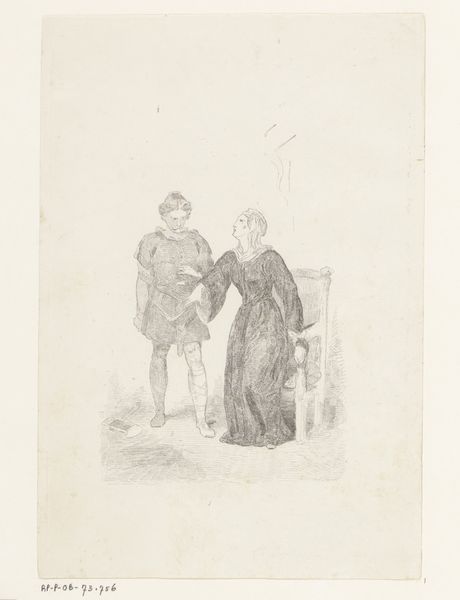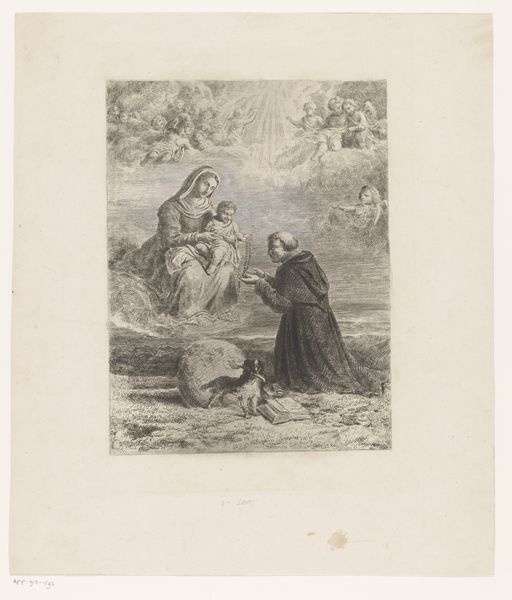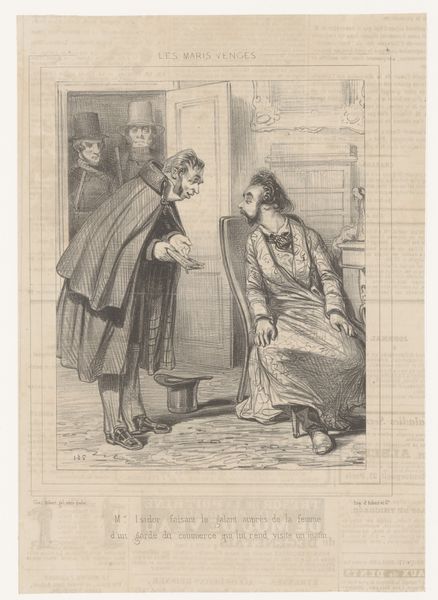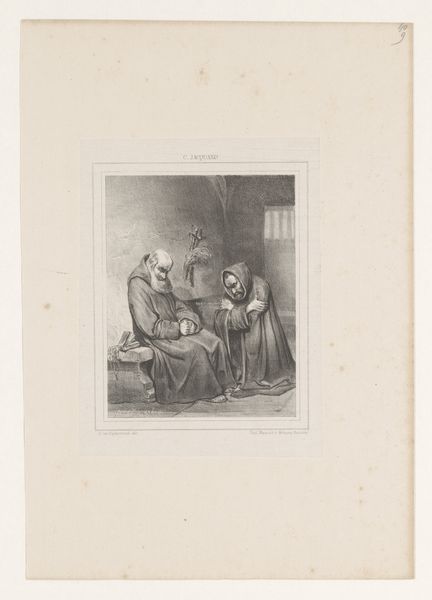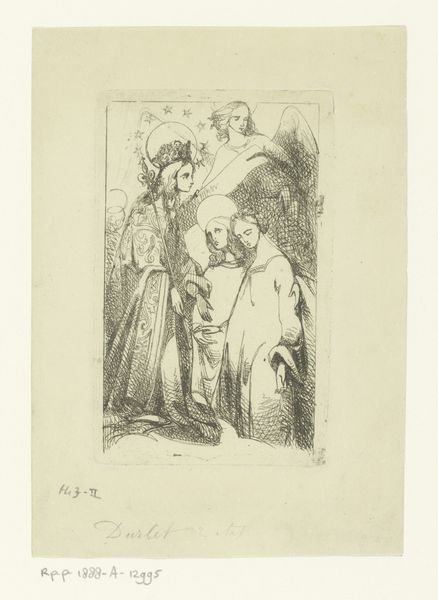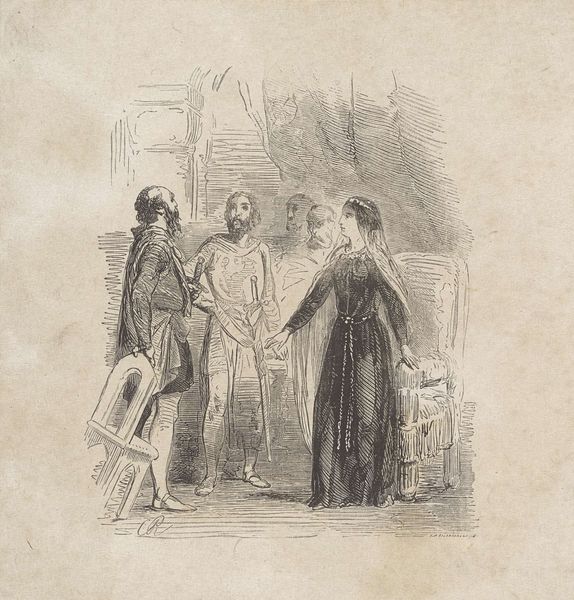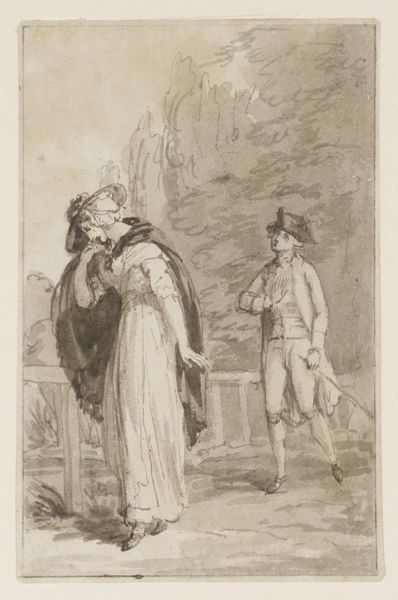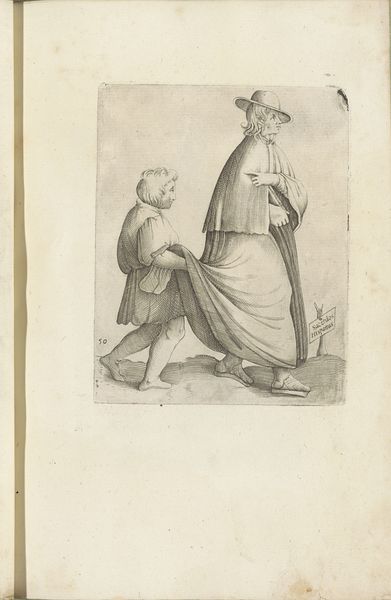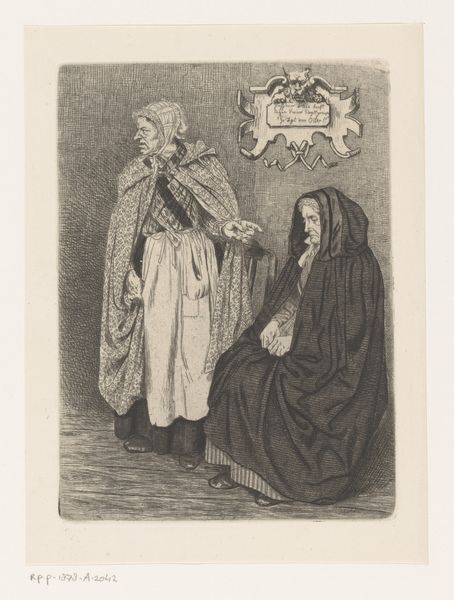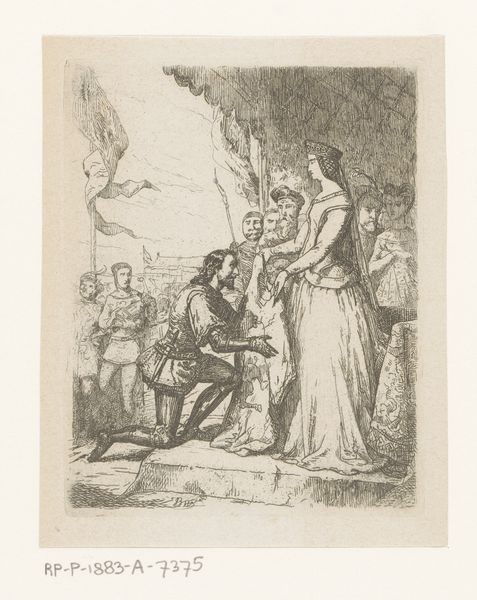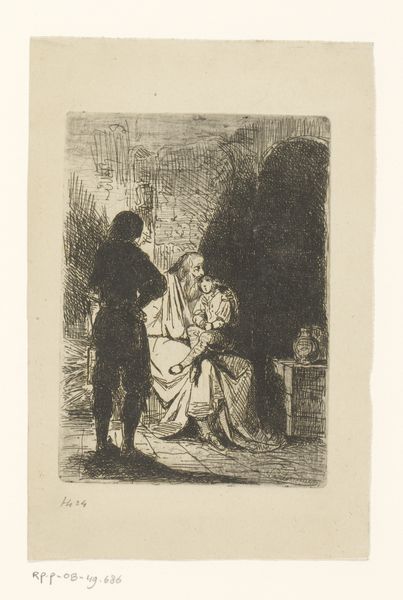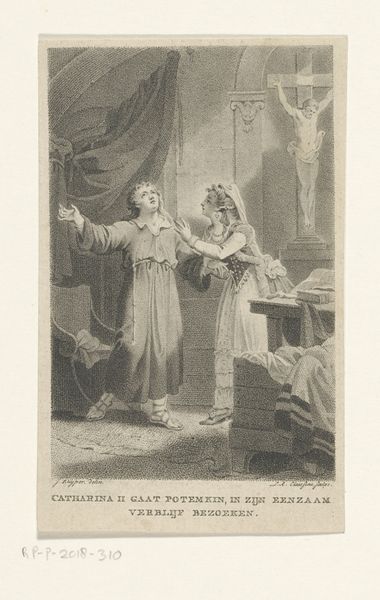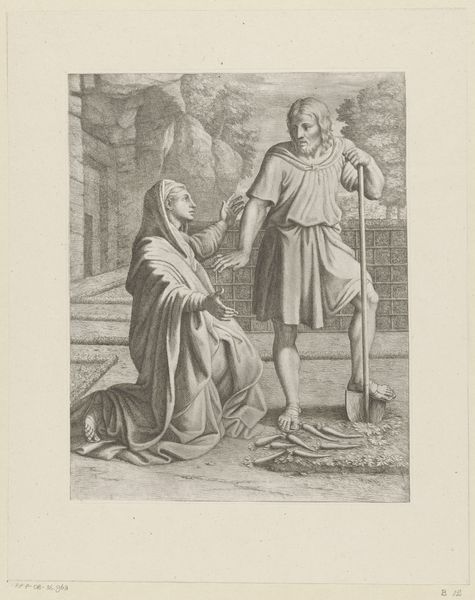
Dimensions: height 201 mm, width 113 mm
Copyright: Rijks Museum: Open Domain
Curator: Looking at this image, I am immediately struck by the stark contrasts of light and shadow—a stage set for an intimate encounter. Editor: Indeed. What we’re viewing is the title page to W.J. Hofdijk’s "Helene," dating back to 1854. The artwork is credited to the Gebroeders Kraay, and the delicate marks we observe were created with a combination of pen and engraving. Curator: The clothing choices here are interesting. They both look very different from what was worn in the 1850's, making me suspect a narrative scene—perhaps one with symbolic connections to folklore? Editor: The artist may have indeed reached back to create distance, stylistically. Consider how the setting appears confined, almost claustrophobic, contributing to a sense of interiority and the drama between these two figures. Notice the woman’s raised gaze, almost pleading, in contrast to the man's subdued stance. Curator: The tilted upward head is also seen as an iconography related to "repentance". Even the details like the placement of her fingers, the position of the chair, could contain the keys to deciphering her mental and psychological state at the moment. Editor: Fascinating! Let's not forget the broader historical lens, though. "Helene," the book itself, was likely part of a rising tide of romantic nationalism in the mid-19th century. An engraving like this would make literary content appear higher quality and have its place in establishing a shared cultural understanding through popular literature. Curator: In terms of public roles and cultural movements, this could be about reinterpreting and presenting historical values during times of societal change. We should consider this kind of artwork as vessels of our cultural memory. Editor: Precisely. It's interesting to me how our different lenses—symbolic and historical—converge to give a complete, enriched view of this intimate scene playing out on a title page. Curator: I will leave pondering how deeply entrenched these historical and cultural symbols are within us.
Comments
No comments
Be the first to comment and join the conversation on the ultimate creative platform.
